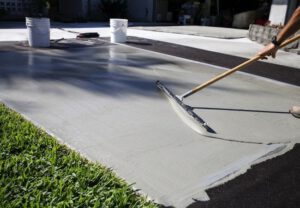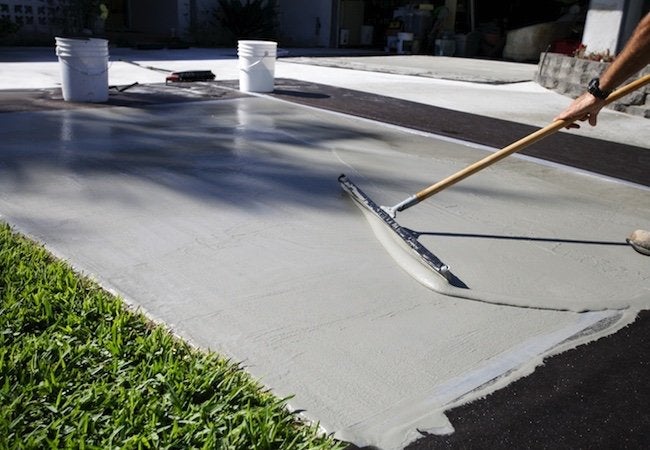Concrete Repair Charles Town WV involves an evaluation of the extent of damage, a determination of its causes, and a selection of repair methods. Proactive monitoring and management of repairs allow structures to reach their designed life.
Professional contractors are trained to work safely and efficiently, saving time and money in the long run. They also offer warranties and insurance for their work.
Concrete cracks can be a serious problem if left untreated. Hairline cracks that are confined to the surface of patios and sidewalks, for example, are relatively safe and can be filled with concrete patching materials. Cracks that extend deeper into the concrete, however, are a sign of structural problems and may require professional repairs. To determine how serious the cracks are, contractors should look for patterns of movement in the concrete and consider the root causes of the cracks.
The first step in repairing concrete cracks is to clean the area and remove any debris that could prevent bonding between the patch material and the existing concrete. The crack should also be cleaned with a pressure washer or blower to ensure that the repair compound will adhere properly. Contractors should allow the concrete to dry completely before applying any crack filler. This can take anywhere from a few hours to several days, depending on the concrete patching product and weather conditions.
The best time to make concrete crack repairs is in cool, overcast weather. This helps ensure that the concrete patching materials will cure properly and prevent premature shrinkage. If you must work in hot, breezy weather, be sure to place plastic tarps over the repaired area and routinely spray it with water for a few days. When applying the crack repair, use a putty knife or mason’s trowel to force the material into the crack, pushing out any trapped air as you go.
Spalling
Spalling ranks high among the worst problems that can befall concrete surfaces. It’s a natural breakdown process that results in sections of the concrete chipping off, exposing aggregate, and making the surface look pitted. Once it starts, spalling quickly spreads, compromising the structural integrity of the concrete and making it vulnerable to more serious problems.
All types of concrete, whether poured in place, precast, or reinforced, can be subject to spalling. It may be caused by chemical reactions, freezing conditions, or simply aging. Regardless of the cause, the best thing to do is get the spalling repaired as soon as you can. The longer you wait, the more damage the concrete will sustain and the harder it will be to repair.
If the spalling damage is shallower than 1/3 of the concrete’s thickness, it can often be restored with a simple surface repair. For this, it’s important that the substrate be clean and dry. In order to achieve the most effective bond, it is recommended that you use a concrete repair product with a polymer additive to help with adhesion. Basham also suggests that you saw-cut the edges of your repair area rather than cutting straight down, as this will mechanically lock the patch to the old concrete and prevent any gaps.
When applying the concrete repair material, ensure that it is mixed thoroughly and until a lump-free consistency is achieved. It is important to saturate the surface of the substrate with water before application in order to avoid a dry, weak bond and early-age shrinkage cracking. In addition, the concrete must be sufficiently cured to provide strength and permeability.
Once the concrete repair is applied, smooth it out with a putty knife or margin trowel. After about 8 hours, the patch should be hard enough to grind or sand flush. Then apply waterproofing or paint to reduce the risk of future spalling and protect your investment.
As a forensic engineering firm, Robson Forensic is often called upon to perform investigations and determine the cause of spalling. Our experts will be able to identify the responsible parties and assess their responsibilities for the design, construction, and maintenance of your project.
Loosening
A concrete structure can suffer from a wide range of damage that may impact its structural performance and durability. These can include abrasion, spalling, corrosion of reinforcement steel, cracking, and loosening due to thermal or water movement. Concrete repair is required to address these and other damaging conditions. However, all repairs are only as successful as the bond that connects the new materials to the existing concrete substrate. This bond is determined primarily by the surface preparation that is undertaken prior to the application of the repair material. This is why precise specifications for surface preparation are critical.
Good adhesion between the repair material and the existing concrete depends on a strong mechanical bond as well as a chemical one. The strength of these bonds is affected by many factors, including the exposure conditions, the properties of the existing concrete substrate, and the quality and characteristics of the repair material.
It is vital that any damaged or deteriorated concrete surfaces be thoroughly cleaned before applying the concrete repair material. Ideally, the entire exposed area should be free of any loose scale and corrosion deposits and be completely cleaned down to the bare concrete. This is essential to prevent any chloride contamination that can affect the steel reinforcement within the concrete. It is also recommended that all corroded steel be chipped away to expose the fresh, bare metal and then thoroughly cleaned. The corroded steel should then be wiped down with a clean cloth to remove any residual oil or grease, and then sanded to achieve an abrasion resistance of SSPC-SP 10. Finally, the exposed rebar should then be brushed with a non-chloride solvent and allowed to dry prior to applying any repair material.
Concrete repair should only be carried out using a high-quality, low-permeability cement-based material that is compatible with the existing host concrete. It is also important to use a slurry mix that has a low viscosity and a high flow rate. This will allow the slurry to be easily pumped into the cracks and joints and will enable the slurry to flow to the bottom of the cracks to fill them fully.
Leaks
Slab leaks are one of the most serious plumbing issues that can befall your home. These leaks develop under the concrete slab that your house is built on and, if left untreated, can damage your foundation and cause your water or gas bills to skyrocket. There are several signs that you may have a slab leak, including wet soil in your yard, warped baseboards, and the smell of mold. If you notice any of these warning signs, it’s important to call a plumber right away.
Slab leak repairs require a lot of skill and precision because the pipes in these structures are located under ground, which means they’re out of sight and mind. But the good news is that these leaks can be repaired with minimal disruption to your home. First, a professional plumber will use thermal imaging and sound equipment to pinpoint the location of the leak. Once they know where it is, they can rip up the slab to access and repair the pipe.
Before beginning any concrete repair, it’s essential to clean out the area and remove any blockages in drains that are close to a broken pipe. This will ensure that any water leaking out of the concrete will have somewhere to go and won’t flood other parts of your home. It will also help prevent the rusting of any steel reinforcement in the concrete, which could lead to its failure.
After removing any blockages, the next step is to dampen the slab and any cracks in it that aren’t currently leaking. This will help the cracks seal over as they dry, making them less visible. If you need to, you can add a concrete crack filler to the cracks to help them seal.
Another way to fix a slab leak is to reroute the plumbing above ground, which is the least intrusive option. This will prevent the need for a jackhammer to break through the concrete, but it can still be expensive and time-consuming. If you choose to do this, make sure the plumber you hire is experienced in underground work and knows how to reroute plumbing without damaging your foundation.

